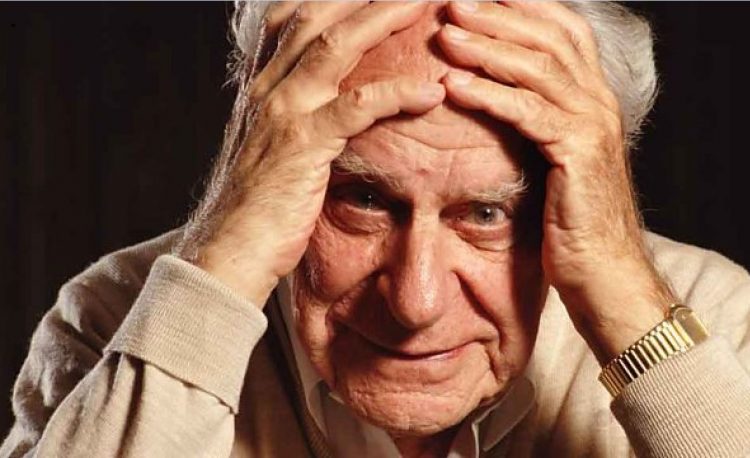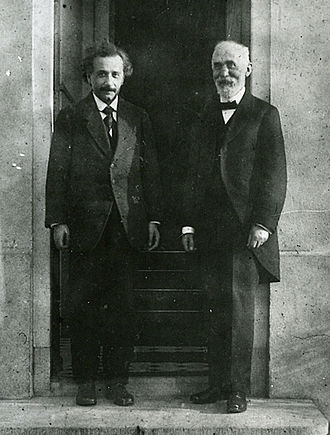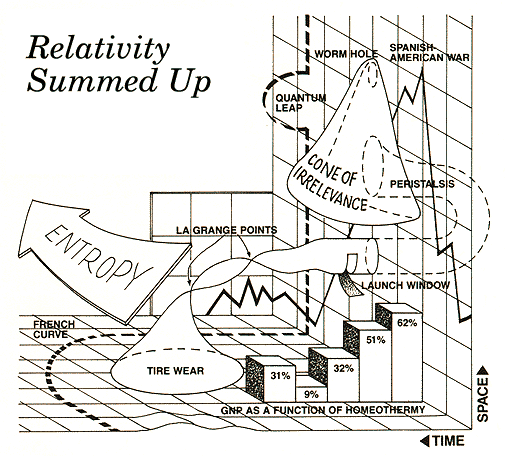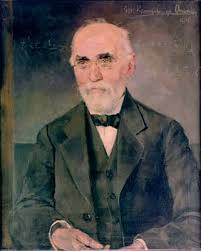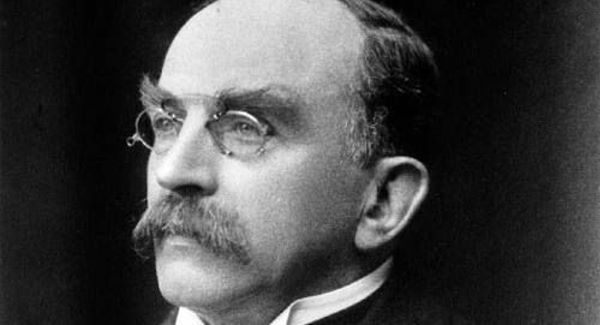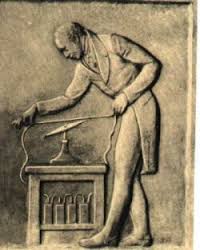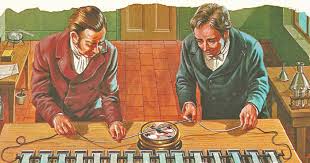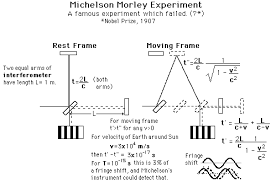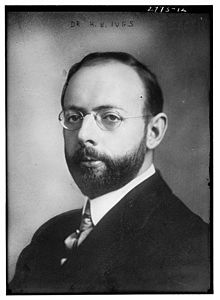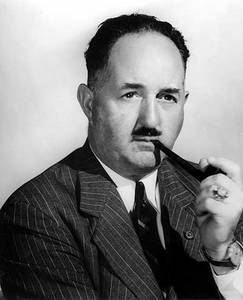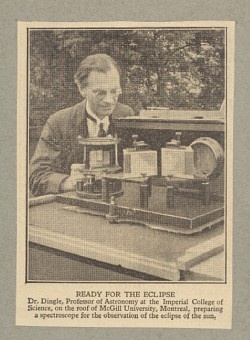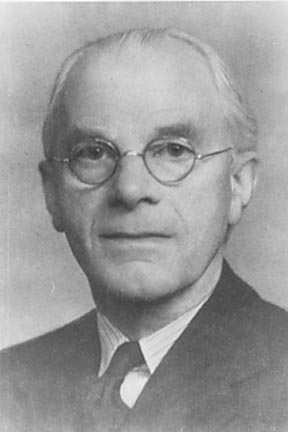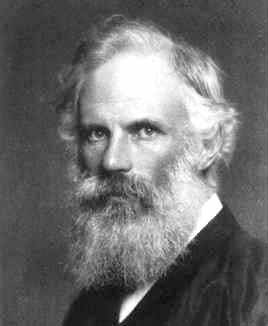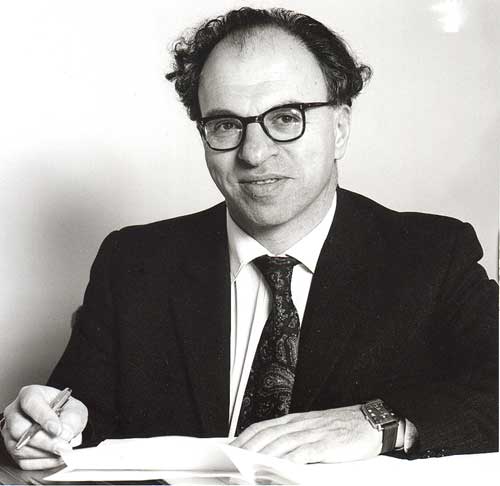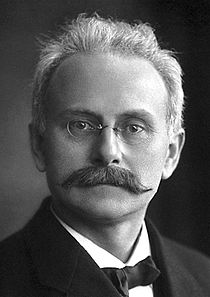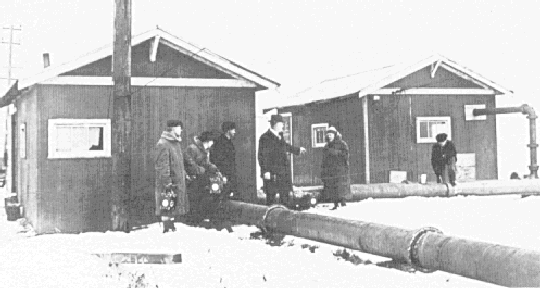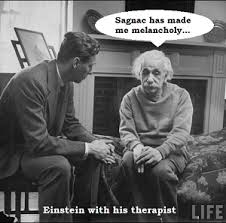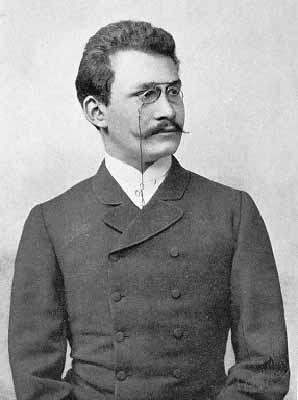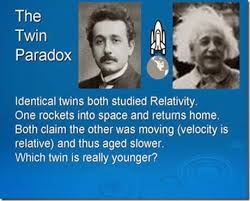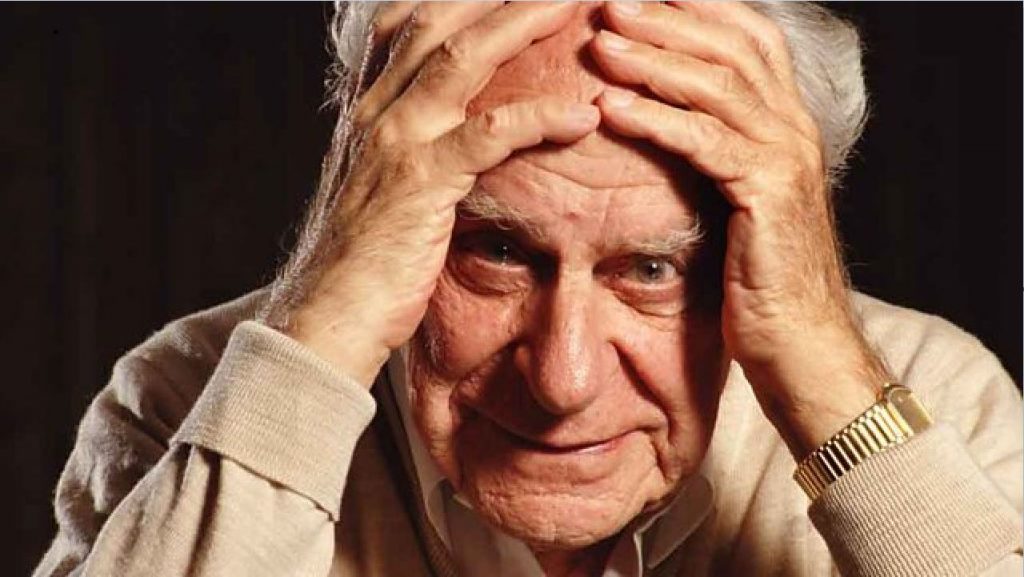1.0 Introduction
This paper defines a new way to assess the scientific value of Einstein’s special theory of relativity by defining a concept called irksomeness. This follows by converting the adjective irksome, meaning vexatious or troublesome, into a noun. We will call a theory irksome by the following definition: An irksome theory is one in which each of its component demonstrations makes sense or is rational, but the theory as a whole makes no sense or is irrational. Hence a theory, such as relativity, which is a very good example of a theory possessing this characteristic, is irksome or possesses irksomeness, if it satisfies the above definition. An irksome theory is recalcitrant in that its inconsistencies, anomalies, or paradoxes refuse to be tamed or effectively eliminated. It is also irksome when its concepts can not be clearly defined in a way such that there is a consistent agreement regarding its essential truth claims.
The irksomeness criterion bypasses some of the less germane arguments that may arise in the evaluation of a scientific theory. For instance, it might be endlessly argued that relativity is correct or valid because it has led to such fruitful results as relativistic mechanics, relativistic cosmology, and relativistic electrodynamics. Or it could be argued that the special theory of relativity is correct, and must be regarded as a scientifically truthful theory, because if it deemed invalid we would have to return to the bad old aether theory, which everyone knows is false, because relativity must be true. These arguments are fruitless and evade the main issue. If science is to be understood as a procedure for determining the true nature of reality, then a necessary criterion is that a scientific theory can not be irksome. It is not required that the
theory be thought to be true for entirely different reasons, or based upon other value judgments, it is necessary because a truly valid theory must not posses irrational elements which produce contradictions in empirical facts or contradictions of interpretational facts. Furthermore, to make this clear, this requirement does not guarantee that a theory is true, is merely asserts that a theory which is irksome can simply not be true.
An irksome theory may be fixed. This can be done by a restructuring of its truth claims, its mathematical theorems, or its formalism, and by reevaluation or reinterpretation of the empirical evidence. If the irksomeness can not be corrected, then it is obvious that the theory is false. Normally, one would expect that an irksome theory would be subject to careful assessment to find the irrational elements or elements that cause the irksomeness, but this is really too much to expect of science. Generally, most scientific theories, if not all of them, are irksome, but in most cases the irksomeness is not an issue of great concern. But in the case of Einstein’s special theory of relativity, irksomeness has been a issue for over the last 100 years, and no scientifically accepted solution has been found to eliminate its irksomeness. Relativity remains scientifically “true“: i.e. accepted as valid by the scientific establishment, despite the fact that it is very irksome, many alternatives have been put forward, and the arguments continue.
2.0 Approach
The approach to the establishment of the irksomeness of Einstein’s special theory of relativity will be based upon the following elements of argumentation. First, the definition of irksomeness will be made precise in terms of what is meant by irksomeness. The theme here is that an irksome theory has some irrational or inconsistent element or principle, which causes the irksomeness.
Second, the irksomeness in Einstein’s foundational papers will be examined. We will see that Einstein developed a strategy whereby he attempted to avoid the irksomeness in two distinct ways. The first was vague and ambiguous truth claims coupled with equally vague and ambiguous analytical concepts, and mathematical procedures, and the second was a constant revision of the foundation principles and truth claim interpretations, in order to suppress the irksomeness of his theory. We will see that one of the main problems was the constant revision of mathematical methods and the interpretation of the two postulates and the truth claims.
A primary measure of irksomeness of a theory is its expert criticism quotient. That is the amount of criticism relative to the criticism of other theories in the same field which it receives from experts or persons in a position to judge its scientific content. Here we take it as an axiom that all theories will receive criticism, however, irksome theories should be subjected to more critical comment than non irksome ones. The reason for this is that irksome theories are seen as fundamentally irrational by critics, and therefore there is much to criticize. We will see in the case of relativity, that the acrimonious criticism exceeds that of any theory of physics conceived in the twentieth century.
Another measure of the irksomeness of a theory is the belief quotient. This is a measure of the effectiveness of the scientific establishment in compelling belief in an established or formally accepted scientific theory. A very good measure is the popular perception of the compulsion to believe. Does the theory have a wide popular rejection, relative to other theories of its type? This is a measure of the effectiveness of the science establishment in making an irksome theory acceptable to normal intelligent humans as well as scientific experts. A high level of belief rejection is an indication of irksomeness.
Another aspect of irksomeness is the problem that a student encounters when he seeks to understand a scientific fact, explanation, or in tlorentz group, image
his case a theory, by consulting different textbooks or expositions of the relevant science. In the case of the special theory of relativity, there are a number of irksome facts, truth claims or conflicting explanations. We will discuss some of the most irksome of these cases, where different experts give different facts, truth claims, or theoretical interpretations with respect to the same theoretical concept. This indicates that there is no agreement as to exactly what constitutes a good exposition of the special theory of relativity, and reveals the theory to be irksome, because the conflicting explanations are irksome; i.e. they are contradictory and inconsistent. This irksomeness of different textbook expositions explains the criticism by experts and disbelief by the populace.
3.0 Irksomeness In The Fundamental Structure Of The Special Theory
This section addresses the irksome aspects that arise from the mathematical structure of the theory. The primary thesis of this analysis is that the special
theory of relativity is nothing but the aether theory of Larmor and Lorentz, which has been mathematically altered to give the appearance that it is a different theory form that of the aether theory by the pretended use of postulates, which appear to give the special theory a different physical basis. The attempt to do this is basically a failure because the foundation of the theory contains irksome elements. Hence the thesis is that the irrational elements of the theory which produce the irksome or irrational elements arise from the fact that Einstein’s attempted modification of the aether theory was not entirely successful and that this failure is indicated by the irksome nature of the resulting scientific explanations.
3.1 The Irksomeness Of Einstein’s Two Postulates
The fundamental principles or hypotheses, which Einstein deceptively calls postulates, have traditionally been a major cause of irksomeness. Einstein states that although they are apparently contradictory hypotheses, that they are in fact not contradictory. This is essentially his first and most important fundamental truth claim. It is that the two postulates are true principles of nature and that they are not contradictory.
Here we have a major source of the irksomeness. It needs to be proved, once and for all that these fundamental principles are not contradictory. No such proof has been produced and the persistent irksomeness of the theory, manifested in contradictory interpretations, changing statements of truth claims and the irrational nature of the purported experimental verifications all demonstrate that there has not been a satisfactory reconciliation of the two fundamental postulates of relativity. It is inevitable that contradictions will appear that can not be successfully removed because the postulates are basically irreconcilable and thus the theory will always be irksome in many of its truth claims and experimental validations.
One of the rather deceptive secrets of science is that laws of nature can not actually be tested directly and must be tested indirectly. The indirect method of testing is to formulate theories based on the hypothesized laws and then to verify by empirical means that the predictions of the theory derived from the supposed laws are valid. A strong requirement is applied that asserts that the theory should produce new previously unknown scientific facts, such as time dilation, mass increase with velocity, or gravitational bending of light. It is generally believed that the theory of relativity dramatically fulfilled this requirement to produce new and startling scientific discoveries. Hence its truth must follow from this success. It is a major purpose of this paper to challenge this conclusion, because it is obvious that a theory which may have produced successful new discoveries may not necessarily be true as a result of this fact, and that it is only through the continued evaluation of the irksomeness of the theory that it is possible to determine whether the theory is fully and completely consistent with the entire universe of scientific facts, which it must successfully explain. Hence a criterion of irksomeness is a criterion that the theory fits all of the facts in a logically consistent and non contradictory manner. It demands a more complete and thorough testing and validation than the much more incomplete criterion that the theory simply produce new scientific facts or as they are sometimes called for dramatic effect, scientific discoveries.
It is basically invalid to base the acceptance of a theory upon the production of a scientific discovery, because studies of how these discoveries occur, have shown that there is no proven way to produce them, that they occur in many different ways, some merely are accidental, and it is not logical to use this as a criterion of truth in science. Yet in the case of the theory of relativity this seems to be the criterion that has been used.
For the skeptical reader I submit the example of the scientific discovery of the magnetic effect of the electric or galvanic current. Oerstead made his discovery, one of the most important in the history of science, based on a theory which no one even bothered to consider as possibly being true. His theory, which was used to produce the discovery, was ignored and is now merely a curious footnote in scientific history. Hence it is clearly possible to make a great scientific discovery based upon a totally false hypothesis for a natural law.
3.2 The Irksome Mathematical Structure Of Lorentz Transformations Is Incomplete
The two relativity postulates are the primary justification for the mathematical structure of the theory which is mathematically embodied in the following way. The thesis of this section, is that the irreconcilable aspects of the two postulates appear in the paradoxes of relativity, because although on the surface the mathematical structure derived from the postulates seems to be consistent, the deeper reality is that the mathematical structure is seriously flawed and produces irksome consequences.
A detailed discussion of this was provided in several previous papers by the author.
www.wbabin.net/science/ricker38.pdf
www.wbabin.net/science/ricker23.pdf
www.wbabin.net/physics/ricker3.pdf
www.wbabin.net/physics/ricker2.pdf
www.wbabin.net/physics/ricker1.htm
Here a summary of the main results is explained in a non-mathematical manner. The primary claim is that the physics of measurement, an important conception that underlies the fundamental ideas of relativity, requires the mathematical structure of a linear algebra, which is not consistent with the mathematical structure of special theory of relativity, because that structure being too simple is incomplete. Hence, it is incapable of correctly being used as the correct mathematical formalism for relativity physics.
The claim of relativity is that a consistent mathematical structure, which correctly represents the physics of the of measurement space and time, can be deduced from the two, apparently contradictory postulates, that is mathematically consistent and non contradictory. This claim was challenged almost as soon as it was proposed, and the controversy has never been resolved in a non-irksome manner. The usual resolution in defense of relativity is to either ignore the irksome difficulties, by denial that they are real, or by embracing the illogical consequences, called paradoxes, as being physically real or valid consequences. Hence, the claim of relativity is that the mathematical structure used, because it is believed to be consistent, must be valid, and so any deductions drawn from it must be valid truthful consequences, no matter how illogical they may seem to an uninformed person.
It is clear that the mathematical structure of the Lorentz group, taken alone, is consistent in the sense that there is no inconsistency in that rotation group structure. However, this is not the correct structure for a theory of relativity that asserts claims such as those made to validate the theory through experiments. Particularly the mu meson and Hafele-Keating experiments. These require real, not apparent, dilation of clock time measurement. As correctly pointed out by Dingle, these experiments imply that if one clock, say A, is slow relative to another clock, say B, then B must be fast relative to A. A fact which is experimentally valid, but inconsistent with the Lorentz group mathematics of special relativity. Hence, this mathematical structure is either totally false, misinterpreted, or incomplete.
Hence, the arguments made here do not dispute that the mathematical group structure is inconsistent, because there are many proofs and arguments that assert otherwise. The assertion made here simply claims that the Lorentz group mathematical structure is not the correct mathematical solution. To make the difference clear, it is claimed that the wrong mathematical formalism has been selected for the theory because the two fundamental postulates are false. Hence the false postulates lead to the selection of the wrong mathematics, and this wrong mathematics leads to the irksomeness of the theory when applied in actual physics.
The explanation of this is as follows. The two postulates require that every inertial frame is physically equivalent to every other inertial frame. Hence each frame has the same value for the velocity of light and the laws of physics are the same for all of them. This is basically an in-distinguish-ability principle. One simply can not tell which frame is the rest frame. This is consistent with the Michelson-Morley experiment which is interpreted in light of the postulates to mean that there is no absolute rest frame of physics as claimed by Isaac Newton.
The basic flaw, or irksome result, that derives from a physical theory based on the two relativity postulates, is therefore that there is no mathematical operation of division in the mathematical structure of relativity, because the mathematical structure consistent with the relativity principle is an additive rotation group. There is no multiplication group, and from this follows the fact that there is no mathematical operation of multiplication as is generally understood in physical usage that can be defined as the mathematical structure of the Lorentz transformation group. This is because the Lorentz transforms form an additive rotation group, and not a multiplicative group with a multiplicative inverse.
Here I will briefly recap why this is a problem. The standard number systems are constructed from two groups. One is additive, and the other is multiplicative. As it turns out, the real numbers are members of both groups and thus the group operation of addition with its inverse, subtraction, and the multiplicative operation and its inverse, division, are fully and completely defined for the real numbers used in physics. However, in relativity, there is an irksome problem. The theory assumes the valid use of the real numbers, which implies a multiplication and its inverse operation of division exists. However, the theory of relativity is defined in such a way that the operation of division does not actually exist and is not allowed. This is because there is no multiplicative group defined in the theory of relativity, there is only an additive or rotational group property defined in that theory.
This group is the Lorentz rotation group. This results in the numerous paradoxes of relativity, because the operation of division is not possible in the mathematical structure of the theory of relativity. Simply put, the inverse Lorentz transformation is a subtraction when it should correctly be a division. Hence the mathematical structure is not false or inconsistent it is simply incomplete. You simply can not do the operation of division in relativity, and expect to get a correct answer. When you do this operation you get a paradox. This one of the major causes of the irksomeness of relativity.
The basic flaw in the mathematical structure of relativity can be expressed differently as follows, in a formal mathematical manner. The theory of relativity employs a mathematical structure called a Lorentz (rotation) group, this mathematical structure is incomplete and is incapable of being used in physics, because physics uses the real number system, which is a field and not a group, because within it there are defined two different kinds of group. One that specifies an addition, with is inverse subtraction, and the other which specifies a multiplication. Consequently an inverse operation of division is specified in the number field and it can be used in physical calculations.
The Lorentz group used alone, is incomplete, because it does not define a division. This restricts its use to a very few problems in physics. To be fully capable of performing calculations in physics, relativity needs to be defined as a linear algebra. But, an algebra needs to have division. Therefore relativity needs to have a mathematical structure which defines a division operation implemented as a Lorentz algebra in order to be a complete mathematical system that is capable of being used in physics. The way that the Lorentz algebra can be defined and used is discussed in the above referenced papers by the author. Since the Lorentz group is incomplete it produces irksome inconsistencies called the paradoxes of relativity, which can not be removed or explained away. Fundamentally the mathematical structure of relativity is irksome because it is an incomplete mathematical structure, and therefore can not be used in physics without producing irksome difficulties.
3.3 Is Special Relativity Fundamentally Different From Aether Theories?
In the 1930s, during the dark depths of the great depression, Dr. Herbert Ives labored to prove that the aether theory of FitzGerald, Larmor, and Lorentz was valid. He produced a series of papers which analyzed the fundamental basis of special relativity and mathematically demonstrated an alternative aether theory. This culminated in a dramatic experimental proof of his theory known as the Ives-Stilwell experiment in 1938. This experiment, conceived as the experimental validation of the Ives aether theory, is now thought to be the fundamental proof of special relativity. How did this happen? How was it possible to claim that an experiment designed to prove the validity of the aether become twisted into a proof of the validity of special relativity? The answer lies in the irksomeness of relativity, which can be twisted to fit any experimental or mathematical interpretation, because it is essentially obscure, vague, and elusive in its physical interpretation.
The story of Ives theory and its validation will not be recounted here, instead we will make two points. First, was the fact that Ives theory caused a major revision of the special theory, and second was that this revision nearly erased all of the differences between the Ives aether theory and the new revisionist special theory of relativity. The main proponent of this revision was Dr. H. P. Robertson, a famous cosmologist, and committed relativist. We know from statements made by Einstein that his special relativity is basically the aether theory of Lorentz, with a modification of the concept of time. Robertson seems to be the only physicist who took Ives theory seriously. But he was already a confirmed relativist, so his approach was not to support the new theory, but to refute it. He was not able to do this as he states, so he chose a different approach to nullify Ives theory. He transformed it into empirical support for special relativity, but in the process did he misinterpret relativity in order to save it?
In Ives biography, Robertson writes as follows: “Ives work in the basic optical field presents a rather curious anomaly, for although he considered that it disproved the special theory of relativity, the fact is that his experimental work offers one of the most valuable supports for this theory, and his numerous theoretical investigations are quite consistent with it….I have at various times examined with care a number of Ives’ theoretical papers attacking Einstein’s theory…To my surprise I found that in each case his deductions were in fact valid, but that his conclusions were only superficially in contradiction with the relativity theory…Ives had in fact set up a theory which was completely equivalent in substance to the special theory of relativity…I sincerely admired his ability….but was never able to convince him that since what he had was in fact indistinguishable in its predictions from the relativity theory within the domain of physics, it was in fact the same theory. My only present concern is that some who have not penetrated to the essence of Ives‘ theoretical work have seized upon it as overthrowing the special theory of relativity, and have used it as an argument for a return to outmoded and invalid ways of thought.â€
Now erasing the difference between the aether theory of FitzGerald, Larmor, Lorentz and Ives in comparison with the special theory had several advantages. Ives challenge, supported by experimental results needed to be nullified. Hence there arose a need to establish a revisionist approach to Einstein’s special theory of relativity in light of new experimental evidence. This also presented the opportunity to disown the absurdity of the clock or twins paradox as a bonus. Hence in the midst of world war two, there was a movement towards revising the special theory of relativity in order to nullify Ives theoretical and experimental work, to incorporate the discovery of increased lifetimes of elementary particles, and to eliminate the embarrassment of the twins paradox. This new revisionist interpretation of special relativity was initiated by Robertson and supported by W. H. McCrea, G. J. Whitrow, F. S. Crawford, H. Bondi, G. Builder, and Adolf Grunbaum.
In the new revisionism, the time dilation effect became real, and not apparent, and this was perfectly in accordance with the particle decay experiments, which now became the ultimate proof of relativity, and then later the Hafele-Keating experiment topped it all off. Unfortunately the new interpretation was not materially different from the aether theory. Not everyone got the revisionist message. Herbert Dingle and Louis Essen could not accept it and disowned relativity, others simply followed the leaders and meekly went along with the new version of relativity, which was basically as Robertson put it, “indistinguishable in its predictions†from the aether theory.
This has certainly given rise to an irksome result. One is on longer sure, whether special relativity refers to Einstein’s theory, or to the revised, special theory of Robertson and his followers. Today textbooks mix up the old Einstein version, usually in the mathematics, with the new revised aether version of relativity. In fact, the difference is now completely obscured by the confusion and obscurity of the textbooks. So it is actually no longer possible to say whether, when one talks about relativity, which relativity he means, since there are so many different versions of it. Some being variations of what Einstein said, some following Minkowski, and others following the revisionist theories that arose during and after World War II. As a result, the question, is there a difference between aether theories and relativity, can no longer be answered with any kind of definite certainty. This is of course a very irksome problem.
3.3.1 Dingle’s Arguments Are Refuted By Two Different Relativity Theories
This section briefly recaps the detailed studies of attempts to refute Herbert Dingle, conducted by the author. The main point is the following. In the 1950s, Dingle became aware of the revisionist relativity propaganda directed at the revision of the twins paradox embarrassment. This produced a prolonged controversy, in which the revisionist relativity proponents succeeded in apparently being victorious. When Dingle realized that the implications of the revised relativity, it asserted asymmetrical twins aging contrary to the relativity principle, contradicted Einstein, he disowned relatively entirely, as it was no longer being taught so as to be consistent with its underlying philosophy and mathematics. This is discussed in detail in the papers on the Twins Paradox at www.wbabin.net/science/ricker30.pdf, and the paper on Dingle’s second refutation of relativity at www.wbabin.net/science/ricker18.pdf.
It is clear Dingle rejected the entire theory because he was unable to accept the revisionist interpretation of relativity, which was not clearly stated as a new and different theory-an obviously dishonest move. When Dingle looked for evidence to refute the revisionist interpretation he uncovered additional flaws and for him the theory became untenable.
Dingle then used the revisionist interpretation to refute relativity, with the argument that if clock A was slower than clock B, then clock B was faster than clock A, which was contrary to what the theory maintained. This produced refutations from non revisionist relativists who proved him wrong based upon the non revisionist interpretation. A good
example of this technique is that of the papers by I. J. Good. See www.wbabin.net/science/ricker19.pdf .
As Dingle persisted in his campaign, he developed a definitive proof that relativity was false. Opponents such as F. S. Crawford pointed to the experimental evidence as supporting the revisionist interpretation of the twins paradox. This tactic seems to have worked against Dingle’s position, because few physicists understood that the revisionist interpretation was a different theory from Einstein’s. They bought into the new version despite the fact it was contrary to what Einstein said, as Dingle maintained.
Put succinctly, Dingle was assaulted from both sides of the relativity establishment. The advocates of the revisionist theory, attacked him for rejecting their asymmetrical twins paradox explanation of time dilation, which was contrary to the original Einstein-Minkowski theory, and the textbook mathematics. On the other hand, when Dingle formulated mathematical refutations of that argument, he came under attack from the other camp of relativists who maintained that Dingle misunderstood relativity because he claimed it was asymmetrical, instead of being symmetrical, and tried to prove him wrong based upon the original theory of Einstein-Minkowski. This was the tactic used by I. J. Good. Meanwhile, Good ignored the refutation by G. J. Whitrow who based his refutation argument on the non Einstein-Minkowski revisionist relativity. See www.wbabin.net/science/ricker23.pdf. This was of course topped off by the kind of argument posed by F. S. Crawford that maintained that the experimental evidence refuted Dingle, so it was obvious that relativity was correct and that Dingle was wrong.
It should be clear to the reader by now that this is an irksome problem, because you can’t switch between two different interpretations, or more correctly two different theories, when trying to refute the same argument. So the claimed refutations of Dingle fail, because they are fundamentally irksome in not being honest regarding what is claimed to be the correct theory of relativity.
3.3.2 Most Relativists Don’t know There Are Different Theories Of Relativity
The bottom line regarding most of the disagreements regarding the facts of relativity is that relativists don’t realize that there are at least two different versions of the theory, and they teach both as if they are the same single consistent theory. They are also oblivious to the fact that there is no actual difference between the aether theory of Fitzgerald-Larmor-Lorentz-Ives and the revisionist theory that emerged during World War Two. They think that the confused merger of the different versions of the theory is one consistent theory, and resist any attempts to clarify the differences and obvious confusion between the different versions by falling back upon the comforting notion, that the theory must be correct, because it is confirmed by experiment, even though they have no idea what this means. This is the irksome truth, about relativity, that is it not understood by its proponents, and it is only the opponents who clearly understand that it is false. This falsity is obvious once it is recognized that there are two different theories pretending to be the one and only true special theory of relativity. The reader who doubts this confusion is invited to read this quotation from Herman Bondi, and see if he can say whether it is consistent with what Einstein says. Doesn’t route dependence imply an absolute space? “The crucial discovery of relativity was the route-dependence of time…we cannot escape within the Principle Of Relativity from the notion of route-dependence of time.†Source, Hermann Bondi, Relativity And Common Sense, A New Approach to Einstein
3.3.3 Modern Special Relativity Is An Aether Theory Using Incorrect Mathematics
This section summarizes the current situation regarding special relativity. As far as its experimental verification is concerned, there is no difference between the special theory and the aether theory as developed by Ives from the work of FitzGerald, Larmor, and Lorentz. The experimental results are fully consistent with that theory. Hence in order to maintain the validity of special relativity, it is necessary to realize that the mathematics is wrong as discussed above. The special theory of relativity will retain its irksomeness as long as the current mathematics continues to be used, along with the false metaphysics upon which this incorrect mathematics is based. The World War Two revision of relativity failed to correct these problems and the result is continued irksomeness in the special theory of relativity.
4.0 Some Clearly Irksome Truth Claims
The purpose of this section will be to discuss examples of clearly irksome truth claims in the special theory of relativity.
4.1 Existence Of A Universal Time Standard
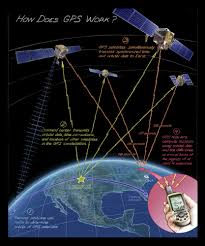
One of the first, and for the modern reader one of the most irksome, is the truth claim in the theory of relativity that there is no such thing as absolute time. This claim has a very compelling refutation, that is that modern scientists and engineers have developed a universal time standard. This means that it is possible to measure time, as a date or an exact time of an event, in terms of an absolutely simultaneous time standard. This universal time exists in reality, it is not a scientific concept, it is an actual practical system of time measurement that is used in modern digital communications networks, and in the Global Positioning System (GPS). The GPS allows users to measure their exact locations to within an extremely high degree of accuracy, because the universal time can define an absolute simultaneity to within a required accuracy that is remarkably high, given the need to specify a global location to within a few meters. The existence of this universal time falsifies the truth claim of special relativity that there is no absolute simultaneity. This contradiction is irksome.
4.2 The Time Dilation Effect Is Determined By Relative Motion
The relativistic truth claim is that clocks in inertial reference frames appear to run slow relative to each other, as determined by the relative motion of the clocks taken as pairs for comparison. The experimental evidence contradicts this. In the Hafele-Keating experiment, it is the absolute motion relative to the earth as reference frame that defines the time dilation effect and not the relative motion of the clocks. This explains why the time dilation effect for westward traveling clocks is different from the eastward traveling clocks when referenced to the ground clock. Although the relative ground velocity is the same for both, they have different measured time dilations relative to the ground based reference clocks. The theory of relativity asserts they should be the same in both cases, since it is only the relative motion that matters not the motion relative to the earth. This experiment clearly refutes the theory of relativity, which asserts that there is no absolute reference frame, by demonstrating that the effect is absolute with respect to the earth’s geocentric reference frame and not the relative motion of the moving clocks. This produces an irksome result, because the explanation is not consistent with the truth claims of the theory, but is nonetheless claimed as an experimental validation of the theory.
Another example of this contradiction is the way GPS clocks are adjusted for the time dilation effect of special relativity. The rate of the orbiting clocks is adjusted to run fast prior to launching of the GPS satellite. The adjustment is calculated based on the orbital velocity in the geocentric reference frame, not the ground referenced velocity of the satellite. Thus the relativistic correction that is applied is not based on the relative velocity of the user clocks, but upon an absolute velocity of the satellite in its orbit. This fact is irksome since it contradicts the claimed truth of special relativity that it is the relative velocity that produces the time dilation effect.
5.0 The Irksomeness Of Experimental Verification
This section will discuss the irksomeness factor that arises in the special theory of relativity with regard to the problem of experimental verification. It is well known that the special theory of relativity is claimed to be one of the most extensively verified and validated scientific theories of physics. This claim is however, false and is strongly related to the irksomeness of relativity. This follows from the fact that when one examines the claim of the extensive validation of relativity, the irksomeness of relativity shows itself as a difficulty. We will take as the first example the time dilation claim.
5.1 The Irksomeness of Making The Time Dilation Prediction
Time dilation is the most famous prediction made by Einstein as a result of his special theory of relativity. It is also a famous claim that this time dilation effect predicted by Einstein has been experimentally proved in numerous ways, such that it is beyond question a true claim.
The following uncomfortable facts will now be presented. First, it is a false statement that Einstein developed time dilation as a prediction from special relativity as a new fact. The time dilation effect had previously been analytically derived by Joseph Larmor and by Heinrich Lorentz from the older aether theory. Second, it appears that experimental evidence for time dilation was available before Einstein made his famous claim, so that this is not a new prediction of a previously unknown effect. It seems the effect had been suspected to exist prior to Einstein’s claim. Third, the time dilation effect predicted by Einstein applies only to clocks observed in a moving frame from a rest frame, and this is consistent with the time dilation experiments from canal rays available when Einstein developed his theory, but not consistent with his prediction of the slowing of a pendulum clock. Fifth, there are three different predictions that can be derived from Einstein’s special relativity, and there is no criteria to determine which of the three different predictions is correct without recourse to experimental validation. These are: clocks run slow, clocks run fast, and all clocks run at the same rate.
The discussion will now address the irksomeness of the three different predictions regarding time in the special theory. The first prediction is the claim of time dilation. This follows from a solution of the Lorentz transformation equations using an evaluation procedure. The evaluation procedure used has no physical justification, since it is merely pulled out of the air. Since the procedure is irrational and has no physical justification, we should not believe it, particularly when there is another equally valid procedure that produces the exact opposite result of time contraction. This result is obtained as the opposite evaluation, and produces the result that moving clocks run fast, and not slow. Hence time contraction is another valid prediction derived from relativity. Finally, there is a third equally valid result that can be obtained. This is the result that there is no difference at all in the time rate of any clocks in relative motion. Finally, there are two more predictions that are pretty irksome. In these we can say that the clocks only appear to run slow or run fast as observed from a relatively moving frame of reference. Hence there are five possible predictions that can be validly claimed to arise from relativity. Hence the fact that one of them does agree with the experimental results suggests the following possibilities.
First, that the prediction of Joseph Larmor based on the aether theory is the correct interpretation, because there is no ambiguity in the aether theory prediction as exists for special relativity. Second, that Einstein knew of the aether theory result and that this suggested to him that the correct analytical method should produce the result of time dilation, so he selected the evaluation condition that produced that prediction. Third, that Einstein knew of experimental results suggesting the time dilation effect so he selected the evaluation to produce that result analytically. Fourth, the experimental coincidence of the supposed prediction with experiment is merely a statistical coincidence. Since there are five possible outcomes, and no particular reason to select any one of them over any other on the basis of the principles of the special theory of relativity, it seems odd that Einstein should have selected the correct result by an evaluation procedure that had no physical justification. This follows because it is unlikely that a correct prediction out of five possibilities could have been selected by chance. So there must be some other reason for the coincidence of the analytical prediction with experiment.
5.2 The Irksomeness Of Determining What Einstein Actually Predicted
In the previous section it was pointed out that there are five possible predictions that could have been logically derived from the special theory of relativity in comparison with the demonstrated result that clocks in motion relative to an earth laboratory at rest exhibit a time dilation effect as evidenced by a slowing of the clocks in motion or a lengthening of the lifetime of elementary particles, when compared with the rest or laboratory clock time. It was concluded that it was improbable that the correct prediction could have been obtained out of five possibilities. Here we will see that an irksomeness in Einstein’s prediction helped in interpreting the claimed experimental validation of his predictions.
Actually there are three predictions that Einstein made in his theory. First, in his 1905 paper he derived an equation that seemed to show that a moving clock ran slow relative to a stationary clock, when viewed from the stationary frame, because the moving clock dial reading was behind the stationary dial reading. Of course in making this prediction he had to assume that the clocks in both frames ran at the same rate, and thus the moving clock only appeared to the stationary observer to be running slow when viewed in motion. He then made a famous statement in which he contradicted this assumption that the two clocks ran at the same rate, when he claimed that a clock at the equator ran slower than one located at one of the poles. This amounted to two different predictions, so increasing the probability of being right, since there were two different predictions made, at that time. This significantly reduced the probability of being wrong, from four out of five (80%) to only two in five (40%).
To see why, consider the following. Out of the five possible outcomes, three were covered by the prediction made in the 1905 paper. That left only two possibilities, both of which were that the moving clock ran fast. One that the clock ran fast and the other that it only appeared to run fast when viewed from the stationary frame. The reader can now see that the only real obstacle is to be sure that the prediction that the clock is slow is correct relative to the one that it runs fast. The others were covered by the irksomeness or ambiguity of the 1905 paper.
Now it is clear that by the time Einstein wrote his 1907 paper, there existed experimental evidence that moving clocks appeared to run slow, based on the results of spectra of fast moving canal rays. Hence in 1907 Einstein modified his theory to produce that result which was observed in the experiments. Luckily, this was the same time dilation result which had been predicted by the aether theory and in his 1905 paper.
5.3 The Irksomeness Of Einstein’s 1907 Time Dilation Prediction
The irksomeness of Einstein’s 1905 paper is evident from the fact that he gives two contradictory claims regarding the nature of time dilation. Furthermore, his method of derivation of the equation justifying the claim is entirely mysterious and physically unjustified. It appears to have been pulled out of the air. Indeed, given the possible outcomes, a probability of one in five, it seems entirely unlikely that the result was not selected to conform to some prior knowledge, either, experimental or theoretical. Since it seems unlikely that Einstein possessed any experimental knowledge of the desired result in 1905, it is concluded that he choose the solution that gave the same result as the aether theory of Lorentz and Larmor. Hence his prediction is not really a prediction independent of the aether theories of Lorentz or Larmor.
In his 1907 paper an entirely different theory of time dilation is presented, and it is clear that it is not possible to claim that an independent prediction was involved. Einstein clearly states his objective is to show that the relativity theory produces a result consistent with the experimental results of the spectral redshift in fast moving canal rays. Hence his derived result is not a prediction, but a demonstration of consistency with a known experimental result. This of course changes the nature of the claim and its value as a validation of the theory. It also gives rise to a very irksome problem. The result which Einstein derives to show that his theory does conform to the experimental results is entirely false, and appears to be either a mathematical blunder or a deliberate obscuration or fudging of the mathematics. The equations used by Einstein actually demonstrate that the observed spectral lines should have been blue shifted instead of the claimed redshift Einstein obtained, in order to conform to the experimental results. So it appears that Einstein fudged the mathematics to make it appear that his equation of time dilation was consistent with the experimental results, when it was contradicted by them. This is certainly an irksome result if one is to believe in the truth of the theory of relativity.
The author has given the details of Einstein’s mistake in making the claim that his theory is consistent with redshifted canal rays in previous papers. Here it will be stated that the result is false because if the equations used for the time by Einstein are converted to frequency, the result is that the frequency in the moving frame of the canal rays is increased in frequency by the motion and not decreased as claimed. This mistake arises because Einstein used the equations for the transformation of clock dial readings instead of the equations for transformation of time intervals. The two transformations are different and Einstein failed to discover this fact. Hence the theory is based upon false transformation equations of time.
The reader should notice that it really does not matter whether this was an innocent mistake or a deliberate fudging of the results. In either case the result was wrong, and it is clear that Einstein’s desire to obtain a result that confirmed the experimental results clouded his judgment and mathematical rigor, so that he obtained the desired result that confirmed his theory, despite the fact that it was mistaken. This resulted in the irksome problem that Einstein’s theory did not correctly predict a time dilation as has been claimed for the last 100 years, but instead predicts a time contraction.
Now even if it is argued that this interpretation is false by proponents of relativity, that claim does not remove the irksomeness of the problem. The irksome fact remains that with this discovery, it is not possible to claim that Einstein correctly predicted time dilation as validated and proved by experiment. The most that can be claimed is that there exists an interpretation of the theory that advances the claim that the theory is consistent with experiment. Since this author asserts the contrary, that the interpretation that relativity is supported by experiment is false, the result is certainly an irksome situation for relativity. In other words, it seems that Einstein really did not correctly make a prediction of time dilation that could be verified by an experiment in any of his papers.
5.4 The Irksome Problem Of Time Dilation
The irksomeness problem with regard to time dilation amounts to this. The definition of time used in the theory of relativity is ambiguous. It is clear that it is always possible to select an interpretation of time and select symbols for that concept that can be used mathematically to derive the required result of time dilation. The irksomeness factor, is that the procedure used, is always subject to the use of a counter demonstration, which obtains the exact opposite result. We have Herbert Dingle to thank for demonstrating this fact.
This result seems impossible, but arises because of a fundamental ambiguity in the mathematics of evaluation of the Lorentz transformation equations. Within the theory of relativity, but not aether theory, there is no physical interpretation that can be used to determine the correct solutions from physical principles. The solutions are solved based upon the fact that they produce the previously known desired result, which is time dilation. There is of course no reason to accept them as the correct solutions, since one can always derive the opposite results based on a different, but equally valid, mathematical procedure.
The problem is that there is no determining fact or principle that can be imposed to decide which of the mathematical solutions is the physically correct one a priori. One always has to appeal to experiment to decide this, and in doing that, the theory looses its predictive power and its experimental validation as well. It is obvious that you can not prove a theory is correct by experiment, if the same experiments were used to determine the mathematics of the theory to begin with. Hence the problem of time dilation in the theory of relativity can never escape being irksome.
5.5 Einstein’s Irksome 1905 Time Dilation Experiment
In 1905 Einstein made the specific claim or prediction that a clock located on the equator of the earth would run slow relative to an identical clock at the north or south pole. This prediction is the basis for most of the claims that Einstein correctly predicted a slowing of time. However if we examine the logic of the claim we discover a serious flaw that is very irksome.
The underlying assumption is that when a clock is moved, it runs slow. This is clear from the analysis upon which the claimed prediction is based. The problem is that in the case of the prediction made by Einstein in his 1905 paper, there is no relative motion. The reference clock is at rest at the pole, and the moving clock is at rest at some longitudinal coordinate on the equator. The supposed motion of the equatorial clock is the result of the absolute rotation of the earth. There is no relative motion since the clocks remain at the same earth coordinates. If we attempt to derive a motion using the earth based coordinates, that rotate with the earth, we find that there is no motion at all. This is because there is no change in the coordinates of the clocks. Hence there is no relative motion. But Einstein claimed there was motion. This claim is a claim of absolute motion, since it is based on the implied rotation of the earth and not upon a change in the coordinates of the clocks.
It is clear from this analysis that there is no relative motion and the supposed motion is an absolute one. But his absolute motion is contrary to the theory of relativity, which asserts only relative motion has meaning. This is another irksome difficulty.
There is one nice aspect of this. That is that it gives us a clear way to test whether or not the effect of time dilation is absolute or relative. That is to perform Einstein’s experiment. Place a reference clock at the south pole at one at some low latitude location and see if the kinematic relativistic effect occurs due to rotation of the earth. If relativity is correct there should be no kinematical effect since there is no relative motion. If the aether theory is correct there should be a slowing of the low latitude clock relative to the pole clock.
In the world of relativity, things are not as nice as they seem. It seems that the prediction made by Einstein is definitely false because his special relativity prediction is contradicted by his general relativity prediction. This makes performing the proposed experiment more difficult, because the claimed kinematical effect is balanced by the gravitational effect. Hence the clock at the equator would run fast relative to the pole clock due to a decreased gravity field, and it will run slow due to the claimed motion due to the rotation of the earth. These cancel each other out in theory. However, it would seem that there is sufficient clock accuracy to actually verify these claims in a long term test, and it is a mystery why this simple experiment has not been performed.
6.0 The Irksomeness Of Experiments That Verify Time Dilation
In the previous section is was shown that there is an ambiguity in the way the claims of time dilation are expressed in the special theory of relativity and that there are eight possible predictions that can be obtained from the theory, and that out of these eight only those which predict no time dilation, or the moving clocks run fast are unambiguously differentiated from aether theory. Since the experiments seem to prove that there is an unambiguous slowing of clocks, which move relative to the earth as an absolute rest frame, it would appear that relativity is falsified by experiments in favor of the aether theory of Larmor and Lorentz. However this is not the conclusion of the scientific community, and brings into focus another irksome aspect of the special theory of relativity.
The main point of this section will be to discuss why the ambiguities of the experiments claimed to provide validation of relativity fail to clearly establish the theory as beyond doubt, and actually provide a much more compelling argument that the aether theory of Larmor and Lorentz is validated instead.
6.1 The Canal Ray Experiments
Canal rays are ionized hydrogen atoms which are accelerated to high velocities in evacuated tubes. The spectral lines are measured at high velocity and compared with the lines at low velocity. As noted above, these experiments had been performed in the early 1900s. One of his first reports on the spectra of canal rays appeared in 1905, and by 1907, Stark had been able to measure a redshift of the spectral lines. In a letter to Einstein, he suggested that this might be a confirmation of special relativity. In his 1907 paper Einstein showed that his theory could be made to be consistent with the observed results. But as noted, the mathematics of Einstein’s claimed proof was flawed. However, the mathematical demonstration was accepted as valid at the time. Unfortunately this does not validate Einstein’s prediction, because a prediction involves a prior prediction and Einstein claims failed to fulfill this criteria.
Later Ives and Stillwell performed a valid experimental validation of the redshift of high velocity canal ray emissions. But they interpreted the results as a validation of the aether theory of Larmor and Lorentz as modified by Ives.
It is clear that the experimental evidence derived from canal rays can not be used as proof of the theory of relativity. There are two reasons. First the prediction applies for the aether theory, and second it is not an independent prediction of the relativity theory since the theory was mathematically derived in the 1907 paper to conform to the redshift prediction despite the fact that the mathematics does not unambiguously lead to this result. Yet all the relativity books claim the Ives Stillwell experiment as a experimental validation of relativity. This is basically a misleading claim, if not and outright distortion of the actual facts. For the analysis being made here, the conclusion is that the experiments on canal rays are irksome in that they are not indisputable proof of relativity. They are just as easily interpreted as proof of the aether theory as claimed by Ives and Stillwell.
6.2 The Mu Meson (Muon) And Related Experiments
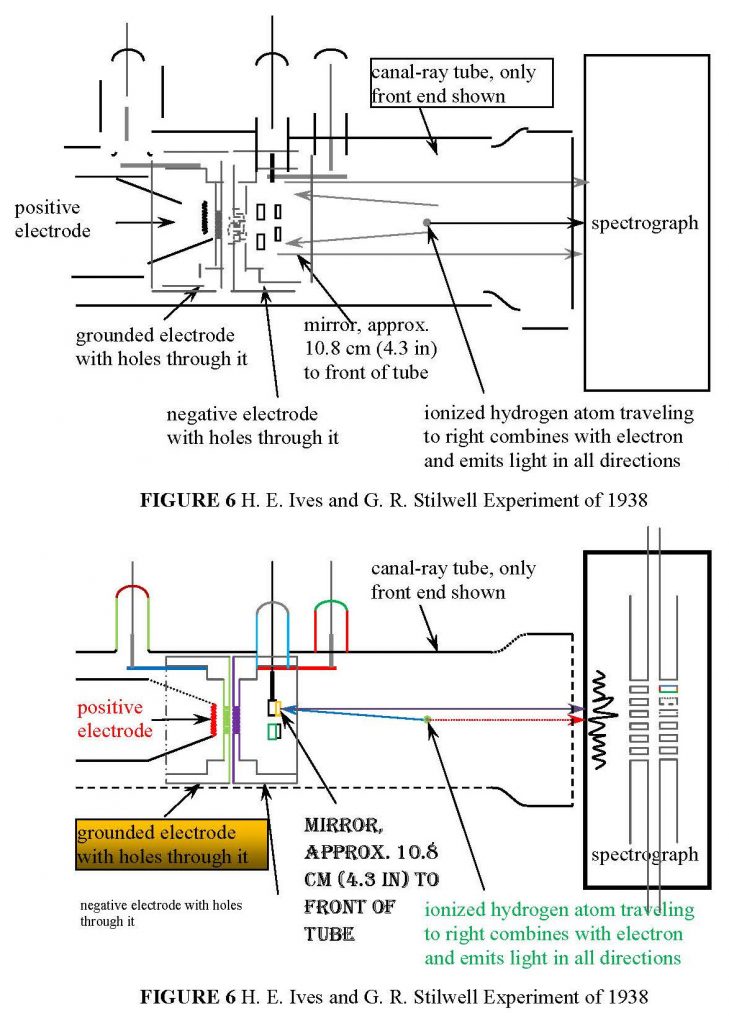
This section addresses a large class of experiments which deal with the lifetimes of elementary particles. The first point is that there never was a prediction of special relativity that applied to these experiments. In the 1940s, after it was noticed that he lifetimes of elementary particles were longer than expected, it was suggested that this effect was due to special relativity. Hence the experiments do not involve a prediction, but an after the fact explanation of an unexplained observation. Later experiments were devised to make this explanation of the longer lifetimes conform to relativity and this created another irksome problem for special relativity experiments.
The first point is that no one bothered to point out that this observed effect is more consistent with the aether theory, than relativity because the aether theory unambiguously implies that time in a moving frame is slowed down by motion through the aether. On the other hand special relativity says that the moving clock only seems to be slowed down for a rest observer. This difference could not be unambiguously removed from the canal ray experiments but the muon experiments were definite in that they showed that the lifetimes of fast moving muons were longer than slow moving ones relative to the earth as an absolute rest frame. Hence instead of validating relativity these results seemed to contradict the theory and its theoretical basis, because they implied that the effect of time dilation was not a relativistic effect but an absolute effect of motion relative to the earth as an absolute rest frame. This is certainly an irksome result, but as discussed above, there was a solution by a revisionist interpretation of the theory to remove this irksome aspect of the experiments.
Now it is certainly true that if we select a reference frame, say the earth laboratory frame, as the rest frame reference for specifying the lifetime of elementary particles, then it is true that particles moving relative to this frame are in relative motion, but they can also be in absolute motion. So there is the irksome problem as to whether the earth frame is an absolute or relative reference frame. This is an irksome difficulty. What it means is simply this. It is impossible on the basis of experiments performed on the lifetimes of elementary particles to confirm relativity while at the same time rejecting the absolute frame aether theory, which takes the earth as an absolute rest frame. Hence these experiments do nothing to validate relativity but simply act as non-falsifying tests of the theory. They do not refute it, but most importantly, they can not prove it with finality as validly true either.
6.2.1 The Equations For Elementary Particle Lifetimes Are Ambigous
Zapffe cites the equation for the lifetimes of elementary particles as given by Rossi. There is no apparent analysis for the derivation of this equation, which perfectly fits the experimental results. However, an irksome difficulty arises because the equation given is not the standard equation given in any of Einstein’s fundamental papers for a prediction of time dilation. In his 1905 paper, Einstein gives an equation which flatly contradicts the equation given by Rossi. In his 1907 paper Einstein gives another, different, equation which is also contradicted by the equation given by Rossi. This is an irksome problem that needs to be resolved.
The basic claim is that the elementary particles can be taken to be clocks, so that their decay times can be used as measures of time intervals. However, elementary particles are not clocks, and do not in any way have similar physical mechanisms resembling clocks. This fact and the assertion that the particle lifetimes are essentially clocks leads to an irksome problem. This can be simply stated as follows. There is no prediction in the fundamental papers of the special theory of relativity which applies to elementary particle lifetimes. Hence we are uncertain exactly which equations in the special theory of relativity correspond to the equations of elementary particle lifetimes, and whether it is a valid claim that these experiments actually do demonstrate the time dilation effect of relativity or are causally related to some other physical process. In effect the irksome problem here is that the claim that elementary particle decay times demonstrate the time dilation effect of relativity is at its most fundamental basis simply an ad hoc hypothesis.
When we examine what the experiments actually demonstrate. They produce the following. We measure the lifetime of slow particles in terms of the international system of time units, a measure called the SI second. We then measure the lifetimes of fast moving particles in terms of the same time units, the SI second. We then compare the two lifetimes, using the same units of measure, SI seconds, and from this the conclusion is derived that the time units for the fast moving particles are different from those of the slow moving ones. But this conclusion depends upon the ad hoc hypothesis that the difference in times is attributable to the difference in time units for the two different cases, so the claim can not be proved on the basis of this evidence, because this conclusion is simply just an ad hoc hypothesis. The only real proof offered that it is true is simply the fact that the data appears to be consistent with, or fits, the time dilation equation. But this equation is not derived from any of Einstein’s fundamental papers so there is actually no evidence that the results claimed follow from any prediction of relativity. All the evidence demonstrates is that the ad hoc hypothesis that elementary particles are clocks is consistent with a relativistic interpretation of the results.
6.2.2 The Muon Experiments Are Consistent With Dingle’s Refutation Of Relativity
There is another rather uncomfortable fact that emerges from the mu meson experiments. This is that the effect can not be apparent but is an absolute increase in the lifetime of the fast moving particles relative to the earth based clocks. Hence the 1907 theory of relativity was definitely refuted by these experiments. However, we already know that this was an incorrect prediction from an analysis of the mathematics. The main implication is that it brings into play a problem raised by Herbert Dingle. He showed that the theory of relativity produces two conflicting results for the effect upon moving clocks. He showed that it is impossible that two moving clocks would each run slower than the other. A result which is definitely consistent with the muon and elementary particle results. However, this claim by Herbert Dingle has been refuted and claimed to be false, on the basis that the relativistic effect is only an apparent one, so that it is not a requirement that the two different clocks run at different rates. The irksomeness of this claim supposed to refute Dingle is that it is contradicted by the results of the muon and related experiments. This is certainly an irksome fact. These experiments validate Dingle’s arguments, since the lifetimes of the elementary particles taken to be clocks, do in fact conform to Dingle’s argument that if one runs slower than the other then the other clock must be fast and not slow as claimed by the special theory of relativity.
There is of course a final irksome problem that arises. Relativists claim that the relativity of simultaneity refutes Dingles arguments that relativity is false. Hence it would appear that the relativity of simultaneity is refuted by the mu meson experiments.
6.2.3 The Muon Experiments Are Valid In Noninertial Reference Frames
The irksome problem of inertial frame arises because the special theory is claimed to apply only in the case of inertial reference frames. However, experiments of decay times for muons in circulating rings have shown that the time dilation effect is independent of acceleration. Hence, the effect is basically insensitive to whether the elementary particles travel in circles (noninertially) or in straight lines (inertially). This result is seen by the relativists as a positive one for relativity since it negates the argument against these experiments that they were not performed in an inertial frame. However, we will see that in the case of the Hafele-Keating experiment this result produces an irksome contradiction. In that experiment it is claimed that acceleration does affect the results and that the results must be analysed in terms which take into account the fact that the experiment is performed in a non inertial frame. But the muon results show that this is unnecessary.
Another way to view this is that the lifetime experiments in circulating rings refute the special theory because that theory requires that the clocks must be in inertial frames. The experimental results refute that prediction, so it would seem that the special theory is not a valid hypothesis in this case. This is evidence against the ad hoc hypothesis that the elementary particles behave as clocks in inertial frames which exhibit the special relativistic time dilation effect. Here is again another irksome problem.
6.3 The Irksome Hafele-Keating Experiment
In 1972 Hafele-Keating published an account of an experiment which has generally been accepted as proof of the special relativity claim that moving clocks run slow. However, this experiment is a rather irksome one for the proponents of relativity. In the first place this experiment produced the irksome result that westward moving clocks gained time and that the eastward moving clocks lost time, a result that makes no sense according to the special theory of relativity developed by Einstein, as given in his fundamental papers. According to this theory clocks always should gain time as a result of running slow. It made no difference in Einstein’s fundamental theory in which direction the motion took place, just as long as there was a relative motion, the direction of this motion was irrelevant. Yet the Hafele-Keating result showed that the direction of the motion critically effected the result. This result is an irksome contradiction of relativity.
Before proceeding to the analysis, we will address why this experiment is considered definitive. The answer is simply that in all of the cases of the experiments claimed to prove or validate or corroborate special relativity, actual clocks were never used. Hence, as soon as it seemed that sufficiently accurate atomic clocks were available to test the theory using actual clocks, the obvious experiment of placing them in relative motion and looking for a time dilation effect was necessary.
The fundamental claim of relativity is that clocks in relative motion run slow. Hence a direct validation using actual clocks was needed. Since the Hafele-Keating experiment claims to validate the special theory of relativity, a conclusion that was believed to be valid before the experiment was even conceived, the result that it validated special relativity became the crowning achievement of that theory, forever validating its truthfulness. Unfortunately it would appear that the clocks used in the 1971 Hafele-Keating experiment did not posses the required accuracy to reveal the relativistic time dilation effect. A further particularly irksome result of this experiment was that the theory was refuted by the results, because according to Hafele-Keating some of the clocks ran fast in direct contradiction with the fundamental truth claim of the special theory.
6.3.1 Hafele-Keating According To Wikipedia
The following gives the Wikipedia version of the Hafele-Keating experiment:
“According to special relativity, the speed of a clock is greatest according to an observer who is not in motion with respect to the clock. In a frame of reference in which the clock is not at rest, the clock runs slower, and the effect is proportional to the square of the velocity. In a frame of reference at rest with respect to the center of the earth, the clock aboard the plane moving eastward, in the direction of the earth’s rotation, is moving faster than a clock that remains on the ground, while the clock aboard the plane moving westward, against the earth’s rotation, is moving slower.â€
Wikipedia
This statement as it stands is actually false and involves a mistake that invalidates the analysis by Hafele-Keating that claims to validate the special theory of relativity. The problem assumes that there is a difference in the motions of clocks near the surface of the earth compared with a reference rest clock, which is a fictitious calculation device, located at the center of the earth. However, since the earth is a sphere, the aircraft travel along paths which describe circles, and relative to the center of a circle, a motion along the circumference does not involve an actual motion relative to the reference rest clock, since the distance from the center is an unchanged constant value. Hence there is no relative motion of clocks that could cause a special relativistic kinematical effect that causes any of the clocks to run slow. Hence the only possible kinematical effect is one due to an absolute motion of the clocks in a absolute reference frame that involves a rotational motion relative to this absolute frame.
Again referencing Wikipedia:
“According to general relativity, another effect comes into play: the slight increase in gravitational potential due to altitude that speeds the clocks back up. Since the aircraft are flying at roughly the same altitude in both directions, this effect is more “constant” between the two clocks, but nevertheless it causes a difference in comparison to the clock on the ground.â€
Wikipedia
“The results were published in Science in 1972:[1][2]

“The published outcome of the experiment was consistent with special relativity, and the observed time gains and losses were reportedly different from zero to a high degree of confidence.â€
“That result was contested by Dr. A. G. Kelly who examined the raw data: according to him, the final published outcome had to be averaged in a biased way in order to claim such a high precision.[3] Also, Louis Essen, the inventor of the atomic clock, published an article in which he discussed the (in his opinion) inadequate accuracy of the experiment.[4]; however, neither of these publications are in peer-reviewed sources.
One notable approximate repetition of the original experiment took place on the 25th anniversary of the original experiment, using more precise atomic clocks, and the results were verified to a higher degree of accuracy.[5]. Nowadays such relativistic effects have been incorporated into the calculations used for the GPS system[6].â€
The purpose in presenting the statements from Wikipedia was to provide an established truth claim with which to examine the actual facts. As noted above, Wikipedia changed the fundamental truth claim that moving clocks run slow into a different claim which is different from what one finds in the fundamental papers on relativity and in standard textbooks. This change involves an ad hoc hypothesis that has been applied to the interpretation of the experimental results. That hypothesis is simply this: The correct frame of reference for the interpretation of the time dilation effect for the Hafele-Keating experiment is the geocentric frame of the earth. This is because the earth is a noninertial frame, and hence special relativity is invalid in this frame. So Hafele-Keating made up an ad hoc hypothesis that would act or behave as a substitute inertial reference frame to reveal the time dilation effect. However, as noted above, the time dilation effect was shown to be not dependent upon any noninertial effects at all. So this ad hoc hypothesis was unnecessary if the circulating ring muon experiments are taken as valid.
As discussed previously, the use of the geocentric reference frame invalidates the special relativity interpretation and implies an absolute reference frame. However, this irksome fact was overlooked by Hafele-Keating and all of their scientific “peers†who reviewed this experimental result. Fortunately for the proponents of relativity, the criticism by Kelly and Essen demonstrate that the clocks did not have sufficient accuracy to demonstrate the time dilation effect. This leads us to the following irksome problem.
The proponents of relativity claim that the experiment decisively proves the special relativity time dilation effect, but because this claim relies upon an analysis which proves instead that the effect is the result of motion in an absolute reference frame, this claim is refused by many scientists who believe the experiment proves that the aether theory is correct. Hence the experiment validates both theories, depending upon your particular preference regarding what you think the experiment actually proves.
Of course the relativists refuse to accept this fact, but the experimental results simply do not fit the special theory of relativity very well, while they perfectly fit the earth centered aether theory. Hence the Hafele-Keating experiment resolves nothing regarding the controversy between the aether theory and special relativity. It would perhaps be better for the relativists to admit that the experiment is invalid, because then it would undercut support for the aether theory that this experiment provides. This is certainly an irksome situation. An inaccurate experiment is claimed to support special relativity, but supports its opposing theory far better, yet there is actually no reason to believe the experimental results have sufficient accuracy to demonstrate anything at all regarding time dilation. This is certainly an irksome mess.
6.3.2 The Irksome Claims Of L. Essen and A.G. Kelly
This section takes a brief look at the conclusions advocated by Louis Essen and A.G. Kelly. Louis Essen is credited with being the inventor of the cesium beam clock. This may perhaps be an overstatement. The fact is he was an expert’s expert in the field of time measurement. There is basically no one better qualified to make a conclusive judgment on the experiment. He said the accuracy of the clocks was not sufficient to deduce the claimed result.
Here are his exact words from Wireless world October 1978, page 45. “…since the difference between individual clocks was as much as 300ns little if any significance can be attached to these average results…The authors do not use all the results and apply a statistical analysis, details of which are not given, to those they do use.†The implication is that those clocks were selected for the analysis which produced results which agreed with the theory, hence they cheated, or fudged, or cooked the books to prove the theory was verified by the experiment.
In an analysis performed later by A.G. Kelly, it became apparent that the experimental books were cooked to produce the confirmatory results. This fact should have been challenged at the time of publication by the peer reviewers of the journal Science. This never happened.
Many years later, Kelly obtained the raw data, which had been kept secret, under the freedom of information act, and revealed that the experimental books were cooked by Hafele-Keating, and that it was not acceptable that the experimental results should have been accepted as valid. But since everyone knew that relativity was the correct and valid theory, the results simply had to come out as they were supposed to according to the predictions of that theory. Simply put it is not clear if the clocks used to produce the experimental results were actually keeping correct time or simply the ones that confirmed relativity the best. In which case, Hafele and Keating concluded that they must have been keeping the correct time since they agreed with the theory. This is not exactly how an experiment is supposed to be done, but when you realize that the theory was assumed to be correct, there is no reason to fault them for producing a result which everyone in the scientific community knew in advance had to be the correct one.
The final conclusion from this is that the reader can pretty much choose to believe in whatever he desires to be the truth, since as a valid scientific experiment, the Hafele-Keating experimental test is consistent with anything the reader thinks or wants to believe are the true facts of the case. Hence the result is basically irksome and not definitive as commonly claimed.
6.4 Irksomeness Of The Michelson-Morley and Michelson-Gale Experiments
In this final section the most important, and the least understood, experiments will be discussed. It is generally supposed that these experiments do not pose any irksome problems since the results are well established. However, as with all experiments the correct theoretical interpretation is crucial. The problem of the irksomeness of the interpretation of these experiments will be addressed.
6.4.1 The Michelson-Morley Experiments
Here we will discuss the large class of experiments based on the first example usually given the name Michelson-Morley. This includes a large group which also includes the Kennedy-Thorndike and Miller experiments, and many others as well. They are all designed to detect the motion of the earth by its motion through the hypothetical aether. The usual interpretation is that they disprove the existence of the aether, since the aether is an auxiliary hypothesis that allows the earths motion to become detectable. The motion detected is zero, so it is argued that because it is known that the earth is in motion around the sun, a fact which is taken to be undoubtedly true, then the inability to measure this true motion demonstrates that there is no aether. The irksomeness of this claim and its acceptance is the subject of this section.
The underlying hypothesis which provides the theoretical basis for all of these experiments is the Copernican hypothesis that the earth and planets perform a revolutionary motion around the sun. According to this hypothesis, the earth and planets are said to revolve around the sun, and the earth, sun, and planets rotate upon their axes of rotation. Satellites, such as the earth’s moon, revolve around their parent planets, just as the planets revolve around the sun. This hypothesis had been firmly established by the Newtonian system of physics and was believed as the absolute truth. However the Michelson-Morley and related experiments do not detect the revolutionary motion of the earth, which is a direct test of the Copernican hypothesis. Rather than reject the Copernican hypothesis, the concept that there is an absolute rest frame centered on the sun and by which the motion of the earth can be measured was rejected instead. Two new hypotheses, which are the foundation of relativity, were instituted to replace the absolute space hypothesis of the Newtonian physical system. There was in addition an additional hypothesis, that of the stagnant or fixed aether due to Fresnel, that supplemented the theory. Hence the aether was identified with Newton’s absolute space, and its rejection led to the rejection of the aether as well.
The irksomeness of this class of experiments arises from the fact that there is a second hypothesis that is capable of explaining the results. This is that the measurement instruments do not move through an absolute aether space as they are carried around the sun by the earth, but that the earth acts as an absolute rest frame and carries the instruments along with it as it revolves around the sun. Hence the instruments do not actually move relative to absolute space but are always at rest within it. The irksome fact is that this hypothesis was never tested and never even considered as a valid hypothesis prior to the establishment of relativity as the absolute truth, in place of the Newtonian hypothesis of absolute space.
6.4.2 The Irksome Michelson-Gale Experiment
Towards the later part of the 1920s, Michelson assisted by Gale, set up and conducted an experiment to detect the rotation of the earth using the same basic theory, but different experimental design, as his previous experiments. By this time the special and general theories of relativity had become established dogma. Michelson never accepted the conclusions of that theory, or he would never have conducted this experiment since according to relativity it should not be possible to detect the rotational motion of the earth using light beams, just as it was not possible to detect the revolutionary motion of the sun using light beams. But it is an irksome fact that Michelson succeeded and this result should not have occurred if we believe the special theory of relativity and its second postulate that the velocity of light is a fixed, never changing, universal constant.
In contradiction of this postulate, Michelson was able to measure the rotational velocity of the earth using the difference in the light velocity caused by the earth’s rotational motion. The conclusion which is obtained from this experiment is that there must be an absolute geocentric rest frame, in contradiction to the theory of relativity, special and general, which asserts there is no such concept in physics. Here again we have a major irksome problem.
The reader should notice that this result, is in agreement with the results of the Hafele-Keating experiment, which asserts in the analysis of its results the existence of a geocentric reference frame. So there are two experiments that confirm the hypothesis of a geocentric absolute reference frame. This makes the irksomeness of the results, which contradict relativity, even more compelling.
Since the instrumental design of the Michelson-Gale was different from the Michelson-Morley, some experimenters in recent years repeated the search for the motion of the earth around the sun using the successful Michelson-Gale design. However they were not successful. Hence the result is that the revolution around the sun can not be detected, while the rotation of the earth can be detected by means of beams of light. This is a basically irksome contradiction.
6.4.3 The Irksome Sagnac Experiment
This experiment is basically an instrument which measures the velocity of light beams in opposite directions when placed upon a spinning table. It gives a positive indication, in apparent contradiction to the second postulate of the theory of relativity that the light velocity is constant. The experiment is irksome in the following way. From one point of view the experiment seems to be a decisive refutation of the second postulate. But the relativists don’t see it that way. They think that because the experiment is conducted in a rotating, or non-inertial reference frame, that it has no bearing at all upon the interpretation and testing of special relativity, which is theoretically valid only for inertial reference frames.
One can imagine that this is certainly a true statement but then wonder, if that is so, then why is it that time dilation is valid in the circulating ring experiments, which are non-inertial frames, but that the Sagnac experiment is invalid in rotating frames? So we are back to the problem that the experiment is an irksome one for the theory of relativity.
7.0 Summary and Conclusion
7.1 Summary
The objective of this paper was to approach Einstein’s special theory of relativity from a different viewpoint by using the concept of irksomeness. This is a criteria that looks for contradictions, inconsistencies, confusing arguments, and ambiguous concepts. In the case of Einstein’s special theory of relativity, irksomeness is a better description of the problems within the theory than attempts to prove that it is flatly false, or contradicted by experiments. The reason is that the ideas and principles involved are themselves so obscure and ambiguous that it is not possible to establish clearly that a given statement is true or false because the interpretation and meaning of the statements are themselves ambiguously uncertain. This is basically because the theory is fundamentally irksome.
7.1.1 There Is No Fundamental Difference Between Einstein’s Special Relativity And Aether Theory
The author’s thesis is that the reason causing the irksomeness of Einstein’s special theory of relativity is that it is an aether theory. Einstein’s theory is essentially the aether theory of Maxwell-Larmor-Lorentz-Ives. Its irksomeness arises when it asserts it is not an aether theory, because it pretends that it is a relative space-time theory following Minkowski’s conception of space-time. This fundamental confusion is basic to the two fundamental postulates, one taken from aether theory and the other from relativity, which Einstein attempts to make consistent with each other. The attempt was a failure as evidenced by the characteristic irksomeness which pervades the theory at every turn.
One particular irksome, and very persistent error, made by Einstein in his 1905 paper perpetuates the irksomeness. In this paper, Einstein mistakenly stated that a clock on the equator will run slow relative to a clock at one of the poles. This claim was made as a kind of prediction, or a truth claim clarification by example, of what the time dilation truth claim meant. However, this claim was false, because the famous prediction was a mistake. It is not true within a relativity theory, but is true within an aether theory. As discussed above, in Einstein’s example, there is no relative motion of the clocks, since there is no change in the coordinate locations. In fact, the clocks are always the same distance apart. However, Einstein asserts there will be a time dilation slowing of the equatorial clock due to its motion, as a result of the rotation of the earth. But this rotation can only be defined relative to the absolute geocentric reference frame of the earth. Fundamentally, the 1905 paper makes predictions which are the results to be expected for an aether theory, since the mathematics used is basically the same as the aether theory of Maxwell-Larmor-Lorentz and Ives.
7.1.2 The 1905 and 1907 Versions Of Einstein’s Theory Contradict Each Other
In his 1907 paper, Einstein removed this mistake regarding clock predictions, but neglected to explain the reason for the change, or to disown the false prediction made in 1905. He also changed the interpretation of the time dilation claim, but again failed to clarify why there was a change, by now calling the time dilation effect “apparent“.
This author suspects that the change was made to respond to criticism by Minkowski, who published a different interpretation of relativity, which introduced the famous notion of space-time. The irksomeness arises because the two different papers imply two different theories of special relativity, which contradict each other.
This contradiction arises in the controversies regarding the twins paradox, and Herbert Dingle’s rejection of relativity as false. Simply put, when faced with the controversy over the twins paradox, Dingle could not reconcile the irksome contradiction brought about by the contradiction inherent in Einstein’s two papers of 1905 and 1907. Both interpretations could not be right in Dingle’s opinion, so he disowned relativity because ultimately it seemed inconsistent and contradictory to him. Dingle’s opposition held to the belief that Dingle had to be wrong in his criticism of relativity because it had been experimentally validated in an overwhelming number of experimental demonstrations. For the relativists, the theory simply had to be valid, despite its irksomeness, because it was confirmed by a compelling set of experimental facts all consistent in validating the truth of the time dilation predictions. Of course they never realized that the prediction of 1905 was a mistake, because no one ever pointed out that fact.
7.1.3 Scientists Have Fudged The Experimental Evidence To Prove Relativity
The word “fudged†is an idiomatic term used in English to indicate that a number result has been made to appear to be correct by altering the data or using some kind of erroneous analysis technique that produces a desired result, when it is actually a false result. In finance the term used is “cooking the booksâ€. In science we say the results were “fudged“.
This term usually means the numbers were altered to make them “look better†relative to the predictions, but one can also fudge by changing the interpretation or meaning of an experiment to make it seem to validate a theory. In relativity, the best example of this is the Hafele-Keating experiment. Other examples of fudging the results in relativity are the elementary particle experiments, and the theory of the GPS system. One can also fudge by claiming that a falsifying experiment really does not falsify the theory. Examples of this are the Michelson-Gale and Sagnac experiments. Another irksome practice is to interpret an experiment that really doesn’t falsify a prediction, but is not really consistent with it either, by saying the result is fully consistent with the theory when it really isn’t. An example of this is the circulating ring muon experiments. These take place in non-inertial frames yet are used to confirm the special theory of relativity, which only applies in inertial reference frames. One wonders why these experiments are not a falsification of relativity, instead of a validation?
The irksome conclusion about the experimental verification of relativity is that the experiments viewed as a whole conform to a verification of the aether theory more closely than they conform to a verification of a relativity theory. This is an extremely irksome fact. One would have hoped that the experimental evidence had not been fudged to support the truth claims of relativity so that the evidence could have been judged in an objective manner so that the actual situation would be easier to resolve, rather than remain in the current confusing state. The irksomeness is exacerbated by the fact that Einstein’s special relativity is really a modified aether theory and the difference between the two theories is theoretically ambiguous. The conclusion is perfectly clear. There is no experiment that unambiguously proves the reciprocal aspect of Einstein’s relativity theory of 1907, while almost all of the results are consistent with an aether interpretation.
In this paper, I have tried to make the point that the theory of relativity is simply just an aether theory that pretends that it is not an aether theory, but is instead a theory of relativity. A primary claim of Einstein’s theory is that there is no aether. But all the experiments come up validating aether theory not relativity theory. Because Einstein didn’t really understand how to demonstrate the difference experimentally in his papers, it seems that he created a point of confusion regarding how to validate the difference between aether theory and his special relativity with his time dilation mistake in his 1905 paper. Today relativists fudge the relativity theory to make it seem that their claims were actually validated by the experiments, which instead validate the aether theory, because it has never been made clear how to differentiate the two theories experimentally. Hence physicists don’t really understand how the two theories are different from each other. The factual evidence is all mixed up, and scientists have perpetuated a big mistake, mainly because they really don’t understand the meaning of the experimental evidence. They simply say that it proves relativity when the facts are clearly irksome.
7.2 Conclusion
The thesis of this paper relies upon an idea drawn from Karl Popper. He defines scientific truth as that which fit’s the facts best. This is however a bit vague, so the idea of irksomeness was used as a truth test for the theory of relativity. According to this idea, a true theory should have very few irksome facts which contradict it, because it, being true, fit’s the facts as well as can be expected. Here we are allowing for mistakes, in the sense that it is possible to have false negative results. Hence even a perfectly true theory will have some irksome facts against it in the real practice of science. The argument then becomes an assessment of the set universe of facts applicable to the theory. A true theory should have few irksome facts, and conversely a false theory should have many irksome facts.
The actual practice of science is totally opposed to this approach. It is based upon the idea of a decisive verification, only one being needed, since such a crucial experiment can decide once and for all between the truth of different hypotheses. In this view, one has only to produce a few decisive facts or experiments, that follow from new and unique predictions, that disclose to science a completely new scientific fact, known in the business as a scientific discovery. So correct new theories should produce scientific discoveries and the truth of the hypothesis underlying the theory lies in these discoveries. The key point being that the correct hypothesis leads to predictions of new discoveries which when verified validates the underlying hypothesis of the theory. (However, as noted above, the discovery of the magnetic effect of the electric current is a notable contradiction to this idea of scientific discovery as a validation of a theory.)
This belief in scientific discovery as theory validation, although very much a popular belief, is unfortunately irksome because it is frequently not clear that a discovery is really new, and not simply just a rediscovered or reinterpreted prior existing fact, or simply an accident. In the case of relativity this is a particularly relevant problem, because it is not perfectly clear that the claimed discoveries of relativity are really the result of that theory being correct or simply just false positive results. In other words, just as it is possible to discover evidence that a theory is false when it may actually be true, it is also possible to produce evidence that a theory is true when it is actually false. Since both of these types of cases are surely going to happen in practice, is it unwise to base acceptance of a theory upon a few so called crucial or decisive experiments. That is why the problem of irksomeness is an important one. It is the only way that the false positives can be detected and erroneously accepted theories can be falsified. We look at the universe of facts and decide if there is a lot of irksomeness in the interpretation of all of them.
This leads us to the conclusion that relativity must be false since there are just too many examples of irksomeness that pervade the theory from its theoretical underpinnings to its claimed experimental validations. Everywhere you look in relativity you will find an example of irksomeness, so the theory just doesn’t fit the facts well and must therefore be discarded as false.
![]()

